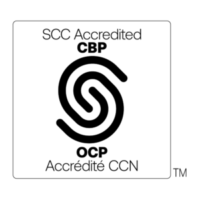ONLINE – October 7 – October 11, 2024, Category I Vibration Specialist Course – Leading to certification – exam included – Flowstar Industrial
$2,195.00
Flowstar Industrial Inc
Location: ONLINE
Phone – 902-896-0041 Fax – 902-896-0082
Email – sales@flowstarind.ca
Subject – Vibration Training – Category I
Date – October 7th to 11th 2024 – Location – ONLINE
Flowstar Industrial Inc. is pleased to offer a vibration Category I course; all course material will be in accordance with ISO 18436-2 standards. Students will write their exam on Friday morning October 11th, 2024. Due to the rising costs to offer our vibration courses, we have determined that a minimum number of students must be enrolled in the courses to make them feasible. In our Cat 1 level course we will need a minimum of 8 students, so please consider registering early.
Deadline for registration is September 23,2024, after this we are not sure if we can get exam’s and book’s.
Category I – Course
Instructor – Roy Zarieh, Cat III certified
Category I course outline
This course is 4 days of classroom training with an exam on the 5th day. following the guidelines developed by the Canadian Machinery Vibration Association, in accordance with the training and certification requirements of the ISO 18436-2 Standard.
According to the ISO Standard:
Individuals meeting the requirement for Category 1 are recognized as being qualified to perform a range of single-channel machinery vibration condition monitoring and diagnostics of machines activities in
Accordance with ISO 17359 and ISO 13373-1. They shall not be responsible, for example, for the choice of sensor or for any analysis to be conducted, or for the assessment of test results, except for Identifying alert conditions against a pre-established alert setting or settings.
They shall be qualified
- To operate portable instrumentation on pre-assigned or pre-programmed
- To acquire readings from permanently installed
- To input results into a database and download routes from a
- To conduct testing under steady-state operation conditions following predefined
- To be able to recognize that no signal is present, and
- To be able to compare overall or single value vibration measurements against pre-established alert settings.
The focus of this level of certification is ensuring the ability to collect good data. The training goes into greater depth in the vibration analysis technology and analysis procedures. The goal is to provide a basic understanding and appreciation of the technology and methods, putting the specific data collection into perspective, and enable participants to relate to the bigger picture of a successful vibration analysis program.
Training is provided for the following subjects as outlined in the ISO standard and detailed further in CMVA’s Performance Objectives. Both of these documents are available from CMVA to its members, on the CMVA’s web site Members only area.
The subjects to be covered are:
- Principles of Vibration
- Data Acquisition
- Signal Processing
- Condition Monitoring
- Fault Analysis
- Corrective Action (incl. basic balancing)
- Equipment Knowledge
- Acceptance Testing
A total of 32 hours of training is provided. This includes some hands-on exercises.
Students are encouraged to bring their own vibration instruments if at all possible and the appropriate software on their laptop computers; however, it is not necessary to rent a unit to participate in the course. Opportunity to use some other vibration instruments will also be provided with accessibility depending on the number of participants and how many systems students bring.
Opportunity to write the CMVA Category 1 exam will be provided at the end of the course. This exam is 60 questions that are multiple choice and 70% or better is required to pass.
Candidates hoping for certification should also be aware that ISO standard recommends a minimum of 6 months full time (40 hours per week) experience with vibration analysis data collection work in addition to the 32 hours of training provided in this course.
The CMVA Certification requirements and policies should be reviewed and understood by all candidates as these are not flexible and not at the discretion of the trainers.



